Abstract
This paper reports a comparison between two modes of computer-aided diagnosis in a real-time prospective trial involving 472 patients with acute abdominal pain. In the first mode the computer-aided system analysed each of the 472 patients by referring to data previously collated from a large series of 600 real-life patients. In the second mode the system used as a basis for its analysis “estimates” of probability provided by a group of six clinicians. The accuracy and reliability of both modes were compared with the performance of unaided clinicians.
Using “real-life” data the computer system was significantly more effective than the unaided clinician. By contrast, when using the clinicians' own estimates the computer-aided system was often less effective than the unaided clinician—especially when diagnosing less common disorders. It seems, firstly, that future systems for computer-aided diagnosis should employ data from real-life and not clinicians' estimates, and, secondly, that clinicians themselves cannot analyse cases in a probabilistic fashion, since often they have little idea of what the “true” probabilities are.
Full text
PDF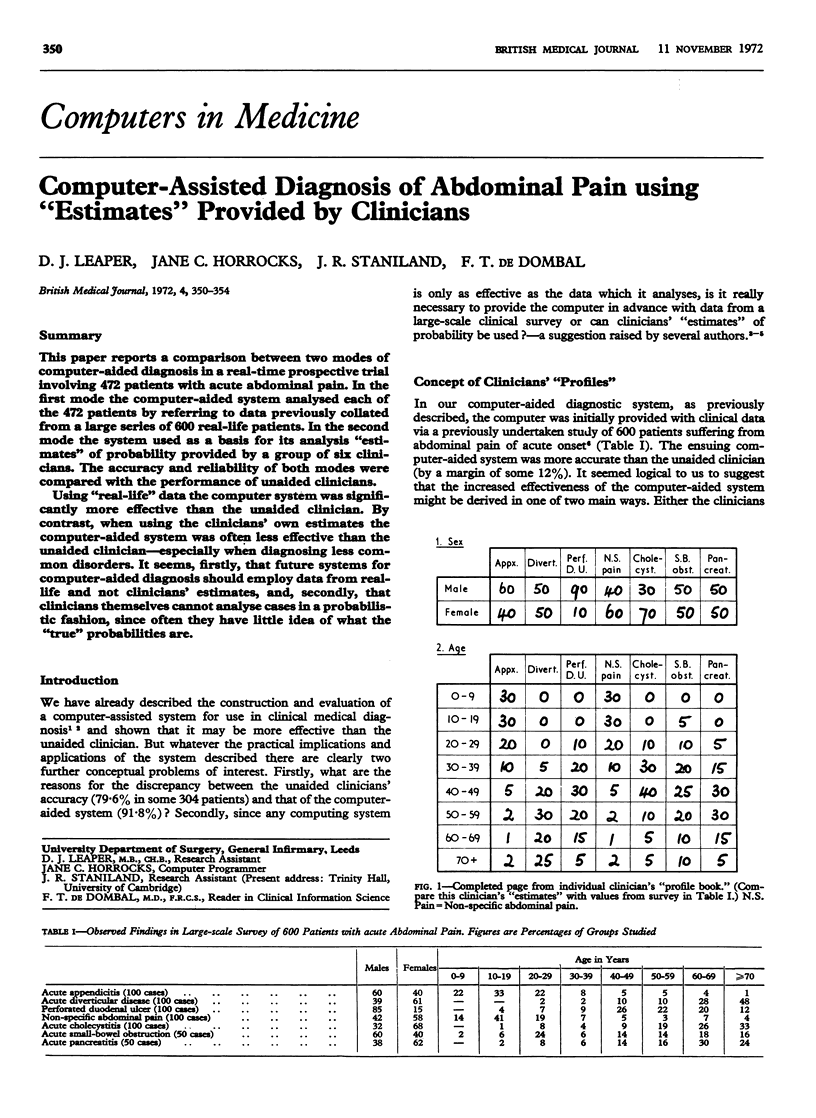
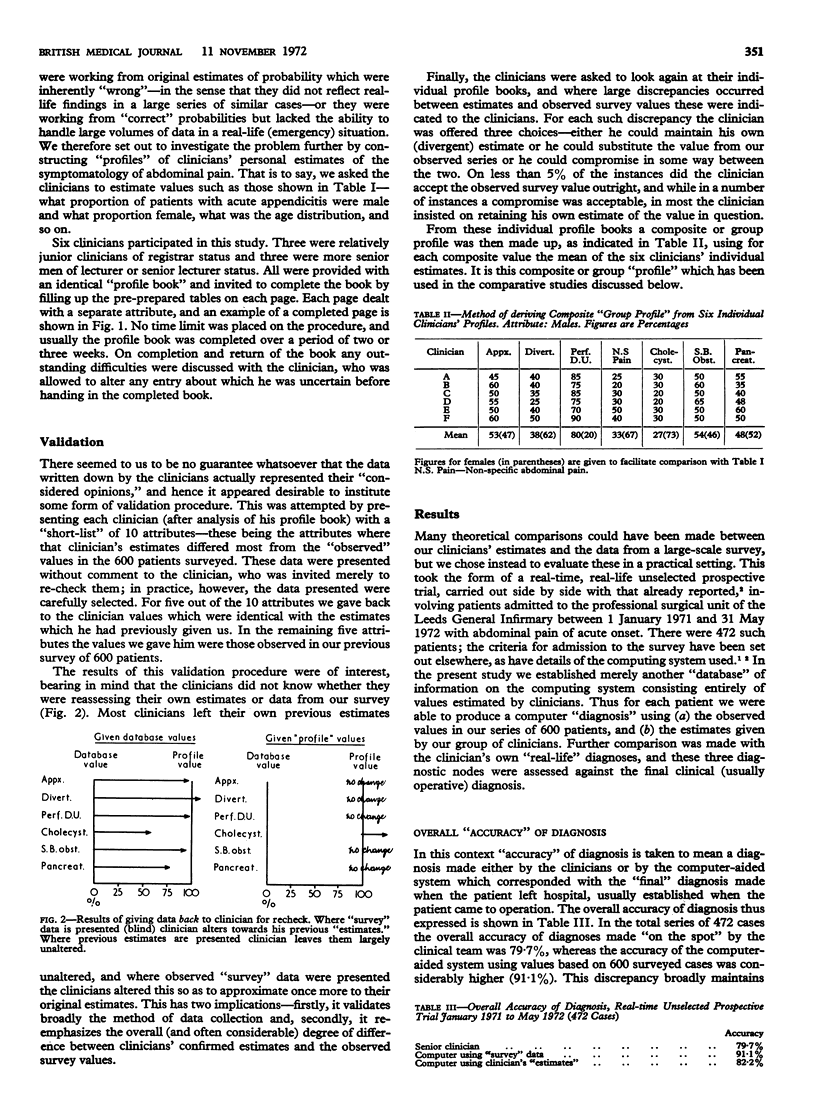
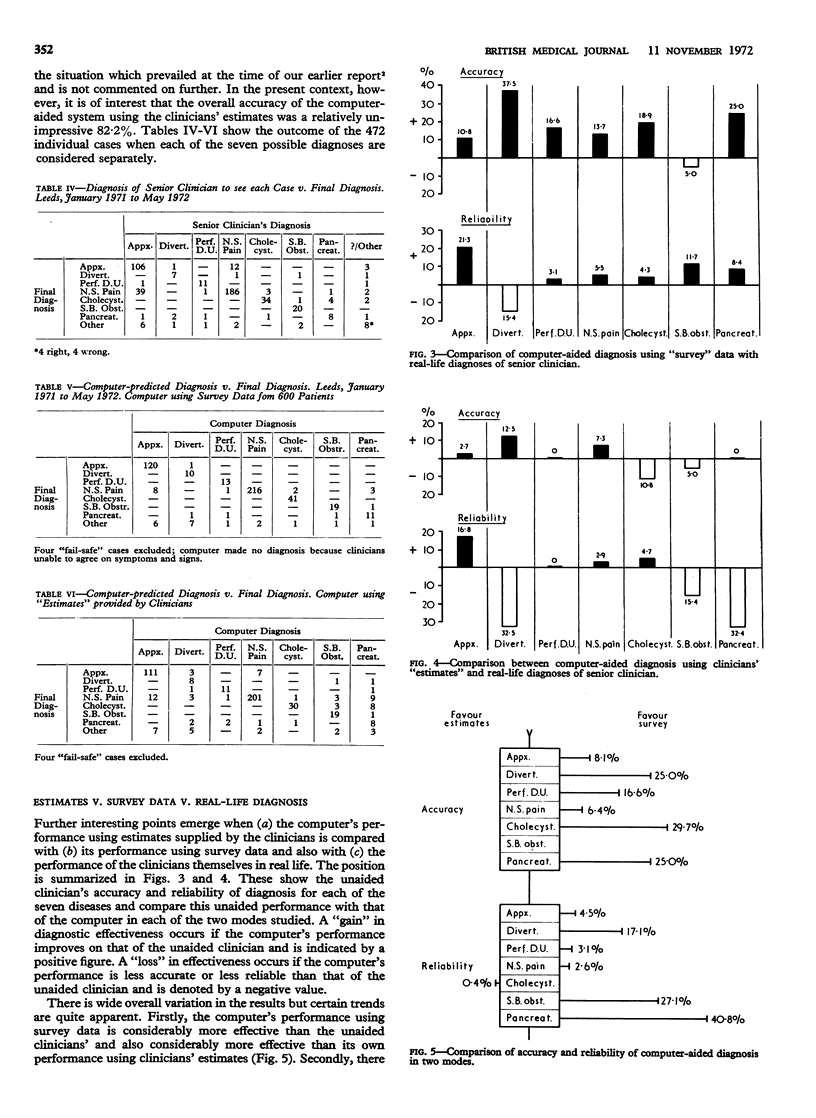
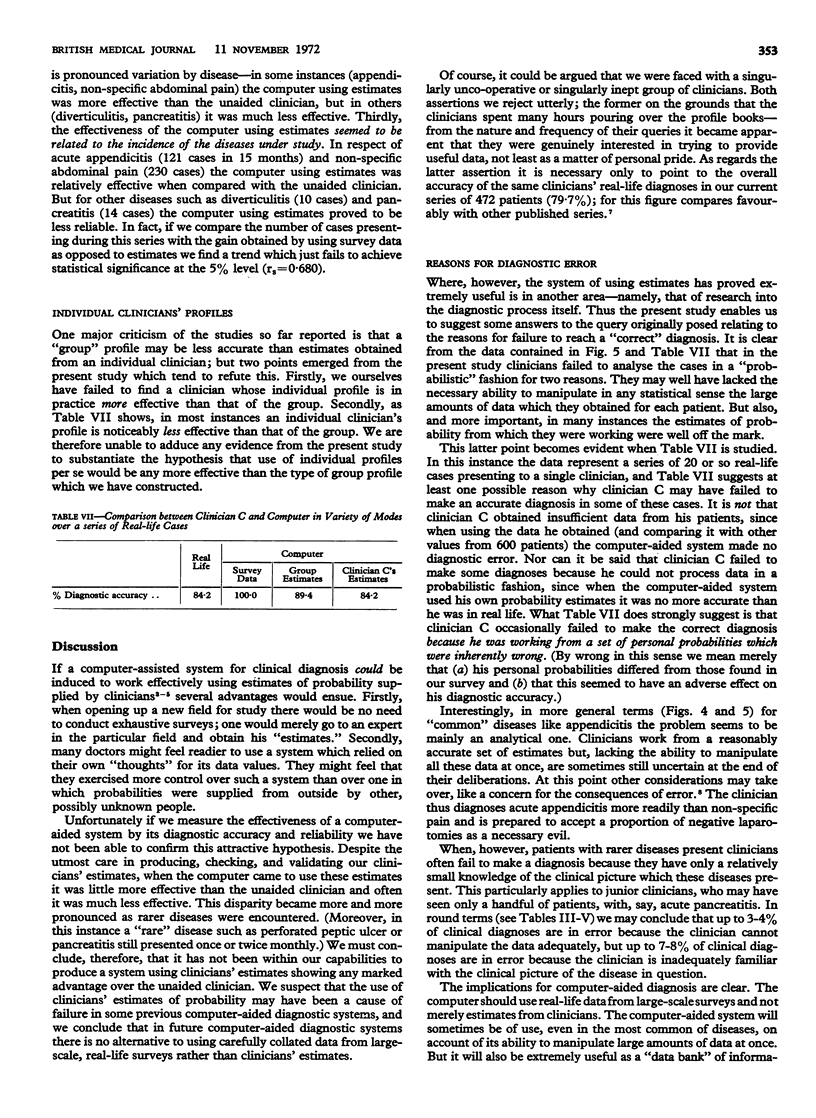
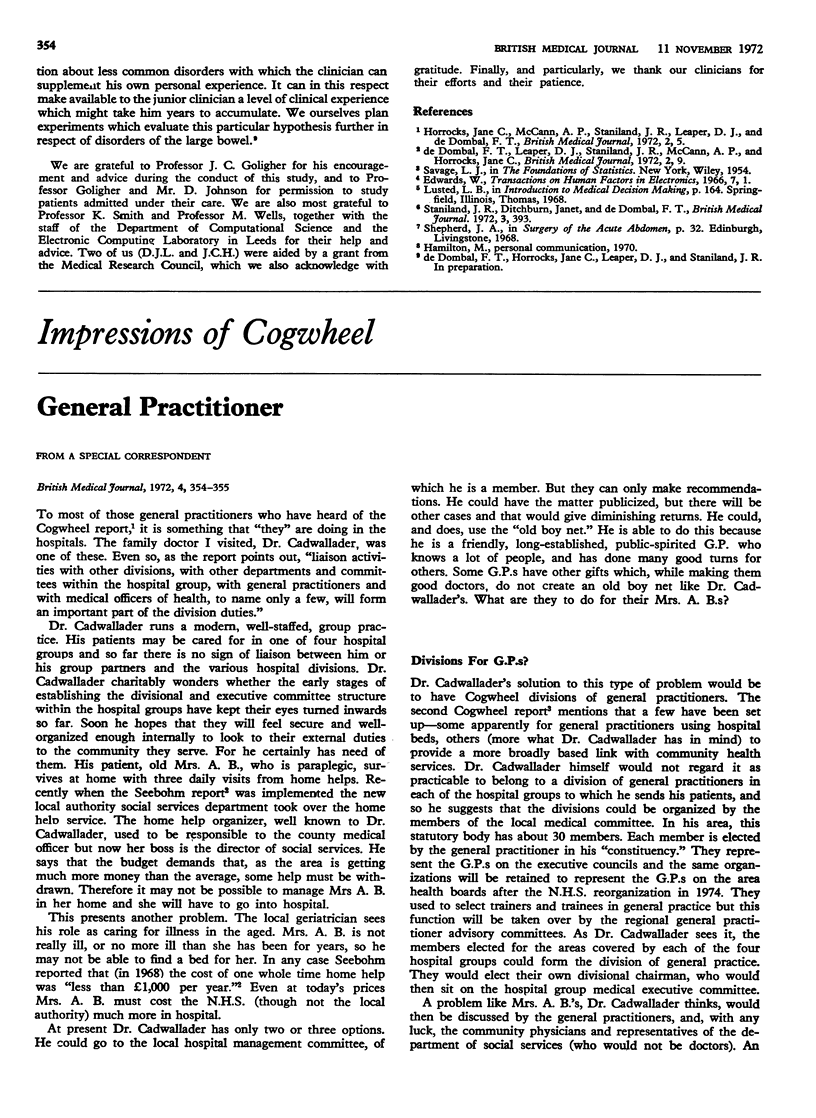
Selected References
These references are in PubMed. This may not be the complete list of references from this article.
- Staniland J. R., Ditchburn J., De Dombal F. T. Clinical presentation of acute abdomen: study of 600 patients. Br Med J. 1972 Aug 12;3(5823):393–398. doi: 10.1136/bmj.3.5823.393. [DOI] [PMC free article] [PubMed] [Google Scholar]


